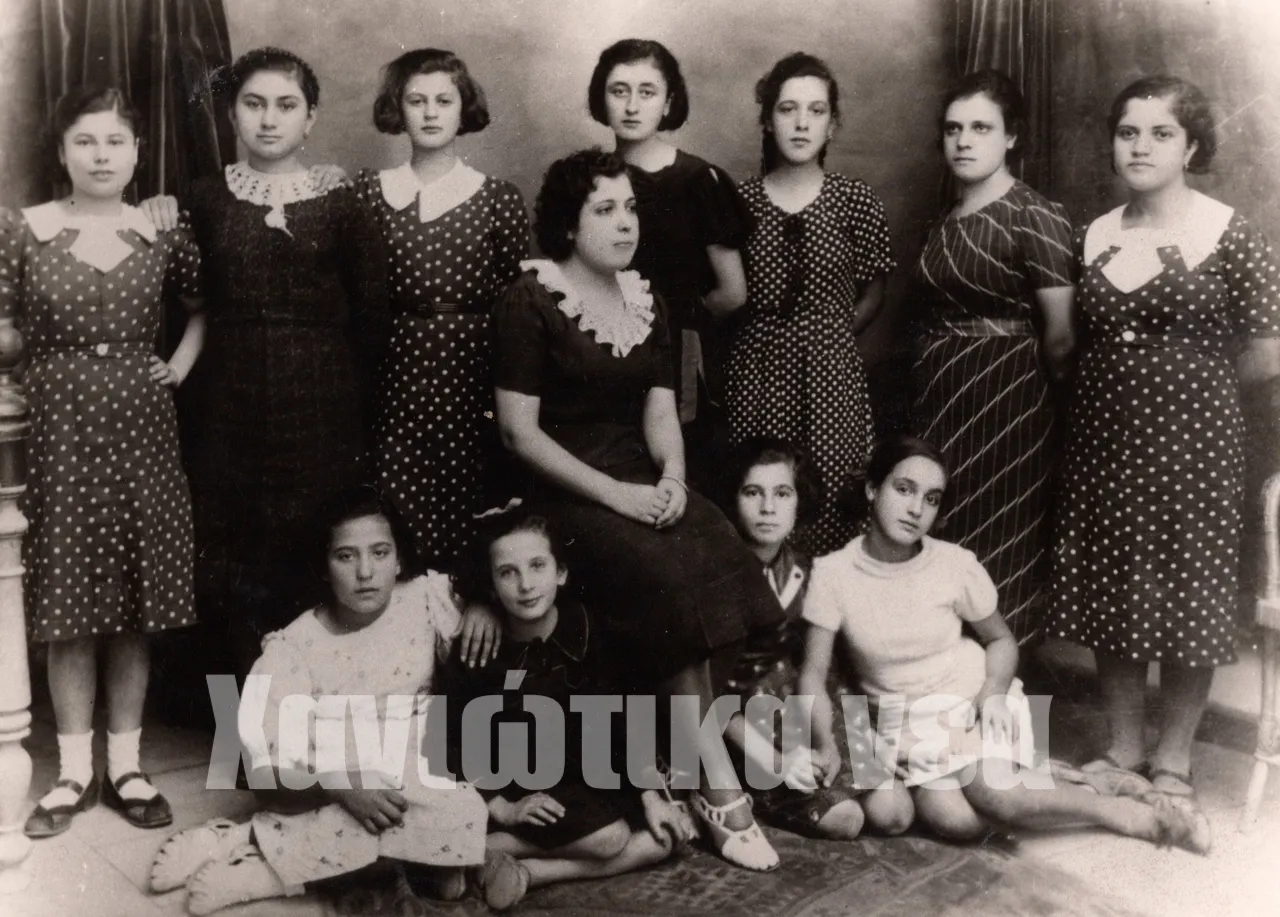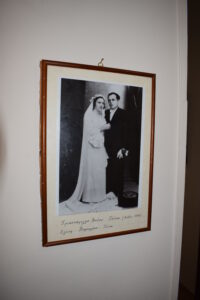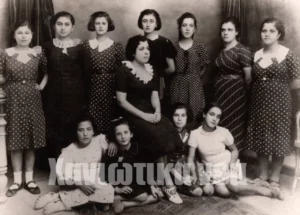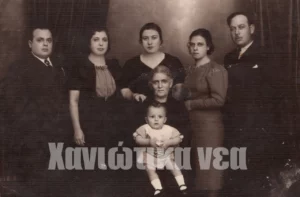The life histories of Ilektra Tsika-Maraki and Effrosini Tsika, née Meimaroglou
City
Migration Period
City Narratives
Tag
Category
Full Description
Ilektra Tsika-Maraki is one of the oldest members of the ‘Agios Polykarpos’ Brotherhood of the Asia Minor refugees in Chania. She is a retired teacher who was born and raised in Chania. Her father, Triantafyllos Tsikas, came from an Asia Minor family, and her mother, Eleni Varouchaki, was from Kasteli in Kissamos, Chania. The couple fell in love and got married despite Eleni’s family opposing her marrying a refugee. They had their first child in 1938, their second child, Ilektra, was born during the German occupation, and the third a few years later.
The family lived in refugee neighbourhoods: Splantzia, Nea Chora – Varousi. After their wedding, Eleni moved in with Triantafyllos’ family which meant that Ilektra grew up with stories from Asia Minor from her father’s refugee relatives and mostly the stories of her paternal grandmother, Effrosini Tsika, née Meimaroglou, who came from a village in Aidini (Aydın). She was also exposed to the narratives of their Asia Minor neighbours when they met in their courtyards every evening. Through Ilektra’s narrative, we can trace the life history of her grandmother, Effrosini, a woman who arrived in Greece as a refugee with her children but without her husband, a common occurrence during refugee waves.
The family’s history starts in Aidini. Konstantis Tsikas, one of the ten children of Triantafyllos Tsikas, worked in the family water mills in Kioskioy. He met Effrosini Meimaroglou and they fell in love. ‘He fell in love with her, they eloped. The story goes that they burst into the tiled yard of his family house riding on a white horse and he announced to his siblings “this is my wife”. They got married, had a good life, he was young and handsome, he had blue eyes’. Ilektra smiles as she describes these movie-like scenes from her grandparents’ life.
They led a comfortable life in Kioskioy as the family was affluent. Effrosini gave birth five times and had 7 children, among them two sets of twins. Four of her children survived: Traintafyllos, Ioanna, Polykarpos, and Maria.
In 1919, during the massacres of Aidini, eight of her father’s siblings were slaughtered. Soon after, her husband was forced into a labour battalion (known among the Christians as ‘amele taburu’) and was never seen again. It is not known when Effrosini left Kioskioy or under what conditions. After the loss of Konstantis and his family, she found refuge with the family of one of her sisters, who had a son-in-law from Chania. Effrosini and her four children, her sister and her children, along with one of their brothers, travelled to Chania and initially settled in the son-in-law’s village, Pyrgos, in Psilonero.
When Effrosini and her children arrived in Crete, 14-year-old Triantafyllos was already considered the head of the family. He started working and so did his sister, Maria. Ilektra says that her grandmother did not want to be rehabilitated rurally. She wanted her children to ‘get ahead’ in the city, as there was nothing connecting the family to agriculture and working the land. A few years later, Triantafyllos became a chemist in ‘Preve-Ioannidis Olive Industrial Company LC’. Maria apprenticed as a seamstress and in the 1930s she opened her own tailoring school. These business activities kept the family financially comfortable and allowed them to purchase a four-story house in Splantzia. They also used the bonds granted to the family by the state to aid refugee rehabilitation. It is said that the house belonged to a rich Muslim and had ceilings decorated with gold leaves. It appears that Effrosini’s family managed to reach a similar standard of living to the one she had enjoyed back in Asia Minor.
In 1941, Chania was bombed heavily. Most of the old city was destroyed, especially its more densely-built neighbourhoods like Splantzia. The family’s house and everything inside were razed to the ground. After the Nazis occupied the island, the factory where Triantafyllos worked was requisitioned. He kept working there and got paid in olive oil. His savings from his salaries, which had been deposited in the form of olive oil in the factory’s reservoirs, were all requisitioned by the Nazi administration. ‘It was all over. They had to go back where they started when they first came over. Start from scratch’, says Ilektra.
The stories Effrosini told her grandchildren, the endless hours she spent on her knees mumbling prayers in front of the vigil lamp in her bedroom, the experience of the family having to start over from nothing right after Ilektra’s birth, the presence of their refugee neighbours – ‘They were such amazing homemakers!’ – and the contempt they all faced from the locals shaped Ilektra’s feelings about the Asia Minor refugee experience and that’s how, over time, she developed a sense of belonging to the Asia Minor refugee community. ‘[Grandma Effrosini] would talk to me about the water mills… she told me about recipes… and I felt sweetness right down to my soul! I had never been to Asia Minor, never seen it, never known it! But I felt the same nostalgia, she passed it on to me! The nostalgia and the love my grandma felt for her homelands, she passed them on to me. And they are still alive in me. I still carry this nostalgia and this love inside me. That’s why I’ve been a member of the Brotherhood for 35 years’.
Ilektra, a second generation Asia Minor refugee, dedicates a large part of her energy to preserving and disseminating the memory of Asia Minor refugees and the culture they brought with them. ‘That’s all they brought, they carried it within their own being, they couldn’t bring anything else, that was their only luggage […]’. The life history of Grandma Effrosini and the rest of her family has inspired a part of Ilektra’s own life history. Nowadays, Ilektra is the person responsible for giving guided tours to students on field trips at the House of the Asia Minor Refugees, a museum space in the centre of Chania. So now it’s Ilektra who is passing down the stories of the Asia Minor refugees through her narratives.
The conclusion of Ilektra’s interview is indicative of the way she has become entangled with the Asia Minor refugee heritage. It reveals the way she observes and interprets the world in relation to the refugee experience, the experience of displacement, and the demanding process of adapting to new, difficult circumstances. With remarkable succinctness, she describes how her father, in his old age, played marbles with the neighbourhood children.



